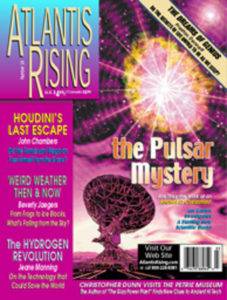
Could ET be calling? Most scientists are not ready to pick up the phone yet, but they acknowledge they have a major puzzle on their hands. Intense bursts of unexplained, but rapid regularly recurring radio activity have now been picked up by major radio telescopes all over the world. The ‘fast radio bursts’ (FRBs) with unknown origins are now considered among the most mysterious anomalies in astrophysics.
In June, 2020, England’s Jodrell Bank Observatory reported an FRB with a cycle of 157 days. Another signal, coming from a galaxy 500 million light-years away, is repeating like clockwork every 16 days. Still another burst pattern (FRB180916.J0158+65) produces radio waves for a period of four days, stops for a period of 12 days, then repeats itself. According to a pre-published study, the first 28 patterns of the latter were observed between September 2018 and October 2019 (https://arxiv.org/pdf/2001.10275.pdf).
First detected in 2007 by astronomer Duncan Lorimer at the Parkes Observatory in New South Wales, Australia, the mystery broadcasts appeared to be emanating from beyond the Milky Way. Later when similar signals came from much closer, but were not immediately confirmed by any other receivers, they were written off as some kind of fluke, but not any more.
In April, 2020, astronomers at the Canadian Hydrogen Intensity Mapping Experiment (CHIME), reported a bright radio burst from the direction of the Galactic magnetar SGR 1935+2154 about 30,000 light years away in the Vulpecula constellation. Referred to as FRB 200428, the burst was cited as the first of its kind detected within the Milky Way, and the first ever to be linked to a known source, a magnetar.
The big question remains though, what are FRBs? There are, apparently, several schools of thought. Some radio astronomers think they may be caused by pulses from the collapse of super massive stars. Others believe they may be generated by solar flares from nearby stars. Some have argued that they could be some kind of signature for long-sought Dark Matter. And yes, some scientists have even begun to speculate about extraterrestrial civilizations. That kind of talk may cause heartburn among the scientific elite, but it has, not yet, been ruled out.
In August 1977 an unexplained signal which appeared to have an intelligent origin was picked up by Jerry R. Ehman working on a SETI (Search for Extra-Terrestrial Intelligence) project for Ohio State University. Ehman famously wrote “Wow!” on the computer printout, and ever since it has been called ‘the Wow! signal.’ The event never recurred and was ultimately written off as a fluke, but it has never been satisfactorily explained by orthodox science. Undeterred, physicist Dr. Paul Laviolette, speculated that the “Wow! Signal” was, indeed, the work of an extra-terrestrial civilization. In his book, Decoding the Message of the Pulsars, (Starlane Publications, 2006), Laviolette argued that since 1967 astronomers have been analyzing very precisely timed signals coming from radio-emitting beacons termed “pulsars.” Pulsars, claimed LaViolette, could be immense navigational beacons created by an ancient spacefaring civilization. (See “The Pulsar Mystery,” in Atlantis Rising Magazine #24, August, 2000)
Everybody agrees, the mysterious signals need more study. In the meantime the sky is being watched with unusual care for the illusive irrefutable scientific proof that we are not alone.
Below are articles from our back issues that connect very directly to this content.
Available for purchase and download.






 Issue #57
Issue #57


















